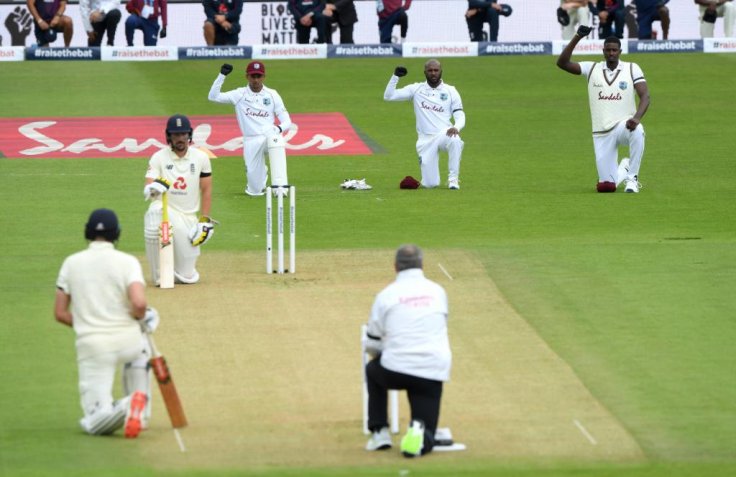The Proteas will not kneel but will raise a fist in solidarity with the Black Lives Matter Movement.
The team announced prior to the England series that they would not kneeling, explaining that they had taken a ‘team decision’ to shift their attention to protesting gender-based violence instead.
CSA then underlined their stand by telling the media in a press conference that they have ‘…drawn a line under the issue’. Widespread criticism followed. Many argued that the history of oppression directed at black South Africans made it important for the team to show their solidarity (it was the first time the team had an opportunity to do so since it became a symbol of solidarity across a myriad codes).
Last week CSA’s Interim Board further dialled up the pressure, urging the Proteas to reconsider their stance. On Saturday morning CSA released a statement on behalf of the team that declared their intention to compromise, using a widely recognisable gesture to show their support.
The statement in full:
‘We as the Proteas team have, on multiple occasions, declared our unmistakable support for the Black Lives Matter (BLM) campaign. We have openly discussed the topic on numerous occasions with the media and amongst each other and we are committed to continuing to do this work together.
‘We continue to own our journey and our previously stated stance on this issue (Players’ Statement and press release dated 25 November). We recognize that our actions will most likely result in criticism from some community, one way or another, but work to prioritise the team, to be honest about our own learning journey and to continue to make decisions that we can own in good conscience as a team, first and foremost, and as individuals.
‘To this end, we have taken the decision – through a process of deep democracy – to raise our fists at the beginning of the Test series against Sri Lanka as a gesture to express our ongoing commitments. We recognize that gestures have histories and contexts, which carry meaning beyond themselves (both positive and negative) and that these gestures may be open to misinterpretation. Symbols also serve the purpose of communicating shared values and meaning.
‘We feel it is important to note that while American football quarterback, Colin Kaepernick, is now known for initiating the gesture of taking the knee, he began his protest by sitting during the singing of the United States of America (USA) anthem. His decision to move toward taking the knee was a response to his context and a desire to own a gesture that had deep significance in the USA political environment.
‘In the same vein as Kaepernick, we would like to use our sporting platform to raise awareness around an issue that matters deeply in this historical moment. We want to do so in a way that unites us around a gesture we own, which speaks to and resonates in our South African context, and which is connected to our own history of struggle for human rights.
‘The raised fist is a powerful gesture in our own history, as expressed in the iconic images of Nelson and Winnie Mandela on Mandela’s release from prison in 1990. In this context it was a powerful gesture of triumph, an acknowledgment of the struggle against apartheid, and a commitment to continuing to fight for equality, justice and freedom, while also honouring the religious and cultural responsibilities of every member of our team.
‘The raised fist has a long history also within the Civil Rights movement. It has been used iconically within the sporting arena as well. For example, American sprinters Tommie Smith and John Carlos raised their fists during a medal ceremony at the 1968 Mexico City Olympic Games, later noting it as a ‘human rights salute’. More recently it has been used within the BLM movement.
‘We recognize the historical and political connotations of the raised fist as a gesture of ongoing solidarity in the fight for racial justice and anti-racism work. So, we stand together and raise our fists as a gesture of solidarity and commitment to continuing the work of pursuing racial justice in our life-times.’







